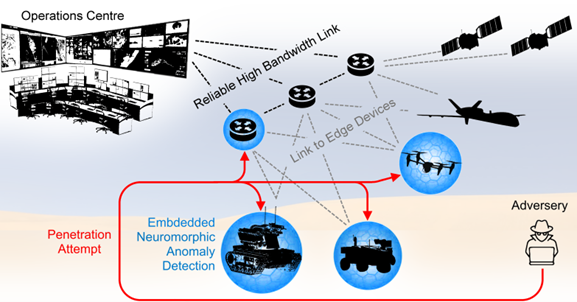Neuromorphic Processors for Cyber Security at the Edge
| Project Title | Neuromorphic Processors for Cyber Security Applications at the Edge |
|---|---|
| Project Timeline | Ongoing |
| Researchers | Dr Saeed Afshar, Professor André van Schaik |
| Partners/Collaborators |  |
Project Synopsis
In this project, we are providing hardware solutions to the problem of security at the edge via the use of Neuromorphic Engineering. Building a suite of low-power high-speed Spiking Neural Networks (SNNs) for anomaly detection which learn the normal operating states of an edge device and detect and report anomalous states.
Project Details
At ICNS we are developing a suite of low-power, high-speed Spiking Neural Networks (SNNs) for real-time anomaly detection for cyber security. Our SNNs are designed to learn the typical operating conditions of an edge device, allowing them to identify and report any deviation from the norm. Unlike traditional security approaches that heavily rely on high-bandwidth communication and expensive storage, our innovative system minimizes the data burden and enhances security by locally learning a model of its network environment without supervision and detecting anomalous events against this model.

Agent based anomaly detection systems are still in an early stage of development with the state-of-the-art solutions relying on computationally expensive Machine Learning (ML) solutions which limits their use in edge applications. The proposed systems would represent significant extensions over our already developed hardware implemented SNN solutions to feature extraction and recognition. These systems operate in the same time-based, noise-robust predictive-coding regime as the brain.
By only transmitting anomalies and through learning to respond locally to anomalies, the system could dramatically reduce the burden on the available communication channels and human operators while rapidly dealing with normal signal traffic at the edge.



